Recently, the tensions among Egypt, Sudan, and Ethiopia over the Grand Ethiopian Renaissance Dam (GERD) on the Blue Nile have escalated, particularly after Ethiopia announced that it had started filling the GERD’s reservoir, an action contrary to Egypt’s mandate that the dam not be filled without a legally binding agreement over the equitable allocation of the Nile’s waters. Egypt has also escalated its call to the international community to get involved. Already, the United States has threatened to withhold development aid to Ethiopia if the conflict is not resolved and an agreement reached.
The dispute over the GERD is part of a long-standing feud between Egypt and Sudan—the downstream states—on the one hand, and Ethiopia and the upstream riparians on the other over access to the Nile’s waters, which are considered a lifeline for millions of people living in Egypt and Sudan. Despite the intense disagreements, though, Ethiopia continues to move forward with the dam, arguing that the hydroelectric project will significantly improve livelihoods in the region more broadly.
A long history of conflict and a shift in power dynamics
Although conflict over the allocation of the waters of the Nile River has existed for many years, the dispute, especially that between Egypt and Ethiopia, significantly escalated when the latter commenced construction of the dam on the Blue Nile in 2011. Ethiopia, whose highlands supply more than 85 percent of the water that flows into the Nile River, has long argued that it has the right to utilize its natural resources to address widespread poverty and improve the living standards of its people. Although Ethiopia has argued that the hydroelectric GERD will not significantly affect the flow of water into the Nile, Egypt, which depends almost entirely on the Nile waters for household and commercial uses, sees the dam as a major threat to its water security.
Over the years, Egypt has used its extensive diplomatic connections and the colonial-era 1929 and 1959 agreements to successfully prevent the construction of any major infrastructure projects on the tributaries of the Nile. As a consequence, Ethiopia has not been able to make significant use of the river’s waters. However, as a result of the ability and willingness of Ethiopians at home and abroad to invest in the dam project, the government was able to raise a significant portion of the money needed to start the construction of the GERD. Chinese banks provided financing for the purchase of the turbines and electrical equipment for the hydroelectric plants.
The lack of a legal framework for water allocation
Although Egypt has persistently argued that the 1959 agreement between Egypt and Sudan is the legal framework for the allocation of the waters of the Nile, Ethiopia and other upstream riparian states reject that argument. The 1959 agreement allocated all the Nile River’s waters to Egypt and Sudan, leaving 10 billion cubic meters (b.c.m.) for seepage and evaporation, but afforded no water to Ethiopia or other upstream riparian states—the sources of most of the water that flows into the Nile. Perhaps even more consequential is the fact that this agreement granted Egypt veto power over future Nile River projects.
Today’s Nile River issues
Officials in Addis Ababa argue that the GERD will have no major impact on water flow into the Nile, instead arguing that the hydropower dam will provide benefits to countries in the region, including as a source of affordable electric power and as a major mechanism for the management of the Nile, including the mitigation of droughts and water salinity.
Egypt, fearing major disruptions to its access to the Nile’s waters, originally intended to prevent even the start of the GERD’s construction. Indeed, Egypt has called the filling of the dam an existential threat, as it fears the dam will negatively impact the country’s water supplies. At this point, though, the GERD is nearly completed, and so Egypt has shifted its position to trying to secure a political agreement over the timetable for filling the GERD’s reservoir and how the GERD will be managed, particularly during droughts. One question that keeps coming up is: Will Ethiopia be willing to release enough water from the reservoir to help mitigate a drought downstream?
Sudan is caught between the competing interests of Egypt and Ethiopia. Although Khartoum initially opposed the construction of the GERD, it has since warmed up to it, citing its potential to improve prospects for domestic development. Nevertheless, Khartoum continues to fear that the operation of the GERD could threaten the safety of Sudan’s own dams and make it much more difficult for the government to manage its own development projects.
Although talks chaired by President Cyril Ramaphosa of South Africa on behalf of the African Union have resolved many issues associated with the filling of the GERD’s reservoir, there is still no agreement on the role that the dam will play in mitigating droughts. The three countries have agreed that “when the flow of Nile water to the dam falls below 35-40 b.c.m. per year, that would constitute a drought” and, according to Egypt and Sudan, Ethiopia would have to release some of the water in the dam’s reservoir to deal with the drought. Ethiopia, however, prefers to have the flexibility to make decisions on how to deal with droughts. Afraid that a drought might appear during the filling period, Egypt wants the filling to take place over a much longer period.
Thinking in the long term: Securing an agreement for managing the Nile River
As they consider this controversial issue, all 11 riparian countries should seek to improve relations among themselves beyond their relationship with the Nile, especially in mutually beneficial areas such as trade; educational and cultural exchanges; the management of natural resources, including water; dealing with threats to peace and security, including the suppression and prevention of terrorism and extremism; and confronting major challenges to economic growth and poverty alleviation, such as climate change, widespread illiteracy, and poor infrastructure. The Nile riparians must understand that the river is a common resource whose effective management must be approached from a basin-wide perspective. Thus, it is only through cooperation that Egypt, Ethiopia, Sudan, and the other riparians can peacefully resolve conflicts over the Nile and achieve the type of water use that will contribute significantly to regional economic and human development.
Poverty alleviation, which is a major concern for all Nile Basin countries, could form the basis of a cooperative arrangement between all the Nile’s riparians. Given agriculture’s importance to pro-poor economic growth, Egypt, which has significant experience and expertise in irrigation agriculture, can share some of that expertise with other countries in exchange for increased trade with them. Another important area of cooperation is research, especially in areas like climate change, the fight against terrorism and extremism, and human rights.
Although the immediate issue at stake—securing a technical agreement on the filling of the GERD’s reservoir—is among Egypt, Ethiopia, and Sudan, the broader and longer-term goal should be for all 11 states—including Tanzania, Uganda, the Democratic Republic of Congo, Rwanda, Burundi, Kenya, Eritrea, and South Sudan—to agree on a legal regime for the management of this important watercourse. Such a meaningful resource-sharing agreement should not only resolve the conflict over water-use rights among the riparian states, but it should help define concepts such as equitable and reasonable use and significant harm, which have been used by the downstream states in their criticisms of the GERD.
Given the fact that the conflict between Egypt, Ethiopia, and Sudan over the GERD seems to be among the most pressing issues in the region, it might be advisable for emphasis to be placed on securing a trilateral agreement that secures the peace between these three countries first. The other riparian states can then be brought in, either through the Nile Basin Initiative (NBI) or some other regional framework, to secure an agreement that is binding on all the states. Although Egypt and Sudan are likely to resist efforts to include the other upstream riparians in the negotiations or to allow a regional organization, such as the NBI, to serve as an implementing organ, they must understand that the Nile River is a regional watercourse and its management must be approached from a regional perspective.
Recommendations for the negotiations
A regional framework for the management of the Nile already exists—the Nile Basin Initiative mentioned above—which is a partnership among the Nile riparian states that was launched in 1999. It can help the riparian states outline principles, rights, and obligations for cooperative management of the resources of the Nile. These countries should return to the NBI’s Cooperative Framework Agreement (CFA), which was concluded in 2010, try to resolve the disagreements that caused Egypt and Sudan to decline to sign the CFA, and use it as a model for a future binding legal regime.
Second, the upstream riparian states must recognize and accept Egypt’s near total dependence on the waters of the Nile River. Such an understanding and appreciation of Egypt’s water vulnerability would help the riparians develop a water management protocol that can significantly enhance equitable and reasonable use while minimizing significant harm to downstream riparians. Nevertheless, Egypt must not use sympathy for its water vulnerability as a weapon to frustrate the efforts of the other riparians to secure an agreement that is balanced, fair, and equitable.
Third, Egypt should abandon continued references to its so-called natural historical rights (i.e., the water rights granted Egypt by the 1929 Anglo-Egyptian Treaty and the 1959 Agreement between Egypt and Sudan). If Egyptian authorities refuse to abandon these anachronistic treaties—which have created untenable water-use rights that benefit only itself and Sudan—all parties will remain at an impasse.
Furthermore, resolving conflicts involving the Nile River is most likely to be more successful through improvements in relations between the riparians and not through external intervention. In that light, Egypt should minimize trips to Washington, D.C., New York, and Brussels, and instead use its diplomatic resources to improve its relations with the other riparian states. Already, on June 19, 2020, Egyptian authorities called upon the United Nations Security Council (UNSC) to intervene after tripartite talks had failed to secure an agreement on the filling schedule for the GERD. Egypt had asked the UNSC “to push the three countries to adhere to their obligations in accordance with the rules of international law in order to reach a fair and balanced solution to the issue of the GERD.” Egypt’s repeated references to the rules of international law is part of an effort to maintain its so-called “natural and historical rights” that were established and reaffirmed by the 1929 Anglo-Egyptian Treaty and 1959 Agreement between Egypt and Sudan, respectively—treaties many of the other involved parties reject as anachronistic and untenable.
Improved relations among Egyptians, Ethiopians, and Sudanese can go a long way in enhancing the ability of their leaders to negotiate and adopt agreements that reflect the interests of citizens, especially regarding economic development and poverty alleviation. For example, Ethiopians and Egyptians are more likely to understand and appreciate the challenges that they face, particularly in the areas of water security, climate change, food production, and poverty alleviation, if they regularly interact with each other and engage in more bottom-up, participatory and inclusive approaches to the resolution of their conflicts. Both citizens and governments should be made part of the solution to the water-related conflicts that now threaten peace and security in the Nile Basin.
The agreement itself
If the relevant parties can agree to these goals, the agreement, in the end, will need to include technical language that ensures equitable sharing of the Nile. Basically, Ethiopia should cooperate with the other riparian states in developing and adopting an effective drought mitigation protocol, one that includes the possibility that GERD managers may have to release water from the reservoir, when necessary, to mitigate droughts. Such a mitigation program can make it much easier for Egyptian and Sudanese authorities to cooperate with Ethiopia and the other riparians in creating and adopting an agreement for management of the Nile.
Similarly, both the final agreement between the riparian states for the allocation of the water and resources of the Nile should include a dispute resolution mechanism. The dispute resolution committee could be made up of the Nile Council of Ministers (Nile-COM), which includes the ministers in charge of water affairs in all member states of the Nile River Basin. The Nile-COM is the highest political and decisionmaking body of the NBI. The decisions that this group renders must be binding on all riparian states.
In the end, all 11 riparian states must understand that the way forward calls for the establishment of a meaningful resource-sharing agreement, one that sees and recognizes the Nile River as a regional watercourse. Success on this endeavor will only occur under a legally binding regime that ensures mutually beneficial rights.
For more on the background and history of these important relationships, see my book with former AGI Director Mwangi S. Kimenyi, “Governing the Nile River Basin: The Search for a New Legal Regime.“
The Brookings Institution is committed to quality, independence, and impact.
We are supported by a diverse array of funders. In line with our values and policies, each Brookings publication represents the sole views of its author(s).

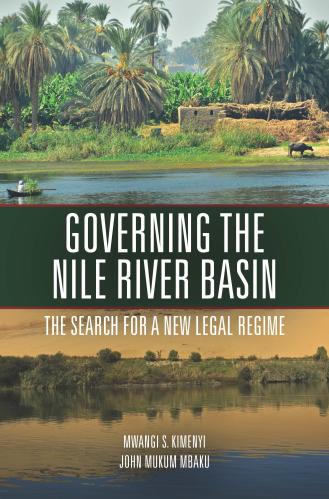
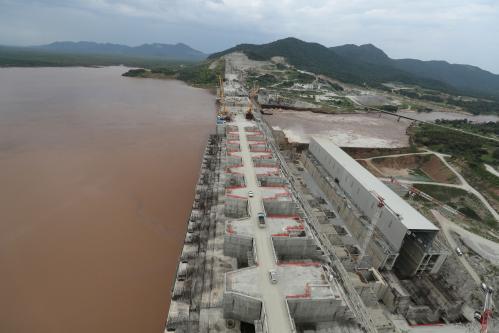
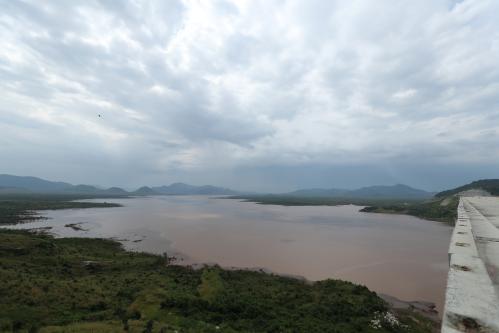
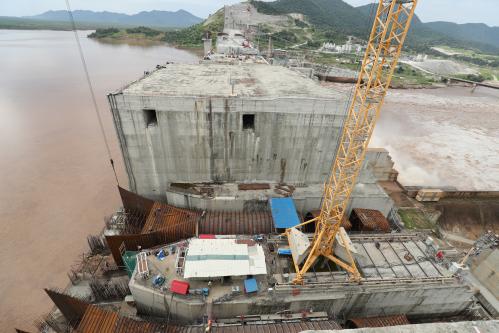


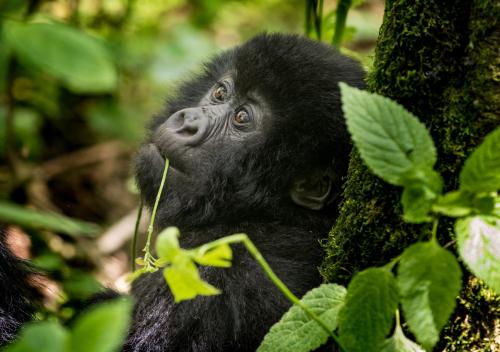
Commentary
The controversy over the Grand Ethiopian Renaissance Dam
August 5, 2020